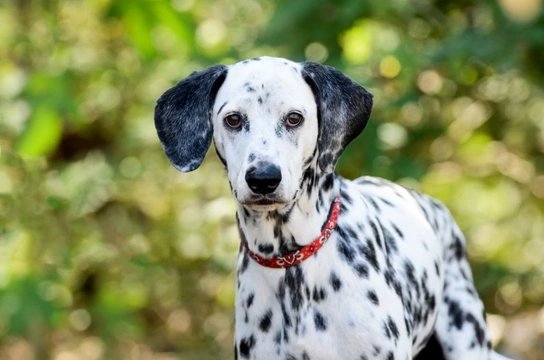
Three alternative dog breeds that prospective Dalmatian buyers might consider
The Dalmatian is of course a very distinctive dog breed, and dogs of the breed have handsome black or liver spots on a white background, which makes them easy to identify and very beautiful to look at.
The Dalmatian’s good looks is often what attracts people to the breed in the first place, and the Dalmatian’s personality helps to secure their popularity, as dogs of the breed can be incredibly comical, and are lively, entertaining, affectionate and great fun to have around.
However, Dalmatians can be challenging dogs to own in many regards, and they require committed, switched on owners that know the breed very well and understand how to work with all of their core traits to get the best out of the dog, and the breed can fairly be described as one that is quite high maintenance.
Dalmatians are excellent with children and can be a great choice of family pet, and active, outdoorsy children that like to walk and play with the dog can really enhance a Dalmatian’s life. Dogs of the breed are very energetic and need several hours of daily exercise, and they tend to be quite fizzy and full of beans, as often have a fairly short attention span too.
This can make training Dalmatians and achieving reliable compliance with training commands a challenge, as can meeting their need for exercise.
Additionally, Dalmatian health is the topic of a lot of discussion, and there are quite a number of hereditary health conditions that can be found within the breed. A reasonable percentage of Dalmatians are either deaf or partially deaf too, which has additional implications for their care and management as well.
Many people researching the Dalmatian breed with a view to buying a dog of this type eventually realise that a Dalmatian isn’t a good fit, or that alternative breeds might be better, and it is a good idea for all prospective puppy buyers to find out about other breeds that they might wish to consider as part of making a final decision.
In this article we will suggest three dog breeds that prospective Dalmatian owners might like to think about choosing instead, and share some insights into each of them. Read on to learn more.
The English pointer
The English pointer is similar in size to the Dalmatian if a little smaller on average, and they have a similar lean and balanced conformation that often appeals to Dalmatian enthusiasts.
Dogs of the breed don’t have the Dalmatian’s signature spotted coat, but they do come in a number of colours and patterns that are all handsome and distinctive in their own right.
Pointers share a lot of the same personality traits found in Dalmatians, including high energy levels, bags of enthusiasm and a reputation for being good with children. English pointers were originally bred as working dogs, and so they do tend to be rather more amenable to training and more biddable than Dalmatians, and they tend to shed less fur around the home too.
The Hungarian Vizsla
The Hungarian Vizsla is another dog of the pointer type that prospective Dalmatian buyers might wish to consider instead, and this is a breed that was very uncommon in the UK up until around a decade or so ago. However, today, Hungarian Vizslas have built up a strong and dedicated fanbase in the UK, who are often first attracted by the breed’s good looks, backed up by an excellent temperament.
Hungarian Vizslas are medium to large-sized dogs with a typical pointer build, and a distinctive chestnut red coat that is unusual, eye catching, and helps to contribute to the breed’s handsome appearance.
The Hungarian Vizsla temperament is excellent, and this is a versatile and adaptive breed that is often a good pick for canine sports, as well as making excellent pets and also working dogs in some roles too.
They are very loyal dogs that look to their owners for direction and follow commands even under pressure, and they are loving, affectionate and trustworthy companions that are quiet within the home and a pleasure to have around.
Hungarian Vizslas do need a lot of exercise and mental stimulation, but assuming that all of their needs are met, they can be one of the most rewarding of dog breeds to own.
The Weimaraner
The Weimaraner is a tall, leggy and handsome dog with a distinctive steel grey coat, which often has a glossy, silvery sheen to it that ensures dogs of the breed really turn heads.
Weimaraners are another dog breed with working origins, and once more, they are versatile, adaptable, and well suited to life as domestic pets and also potentially for canine sports.
This is another high energy breed that is also very smart, and Weimaraners can learn and execute a wide range of commands, and they are generally very amenable to training as they actively enjoy having a job to do and something to concentrate their attentions on.
They are once more very good with children and often very protective over them, but they don’t tend to thrive without company for the larger part of the day, a trait they have in common with the Dalmatian.



